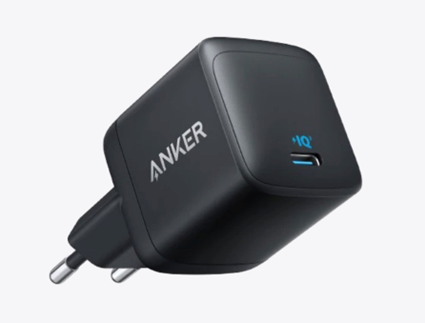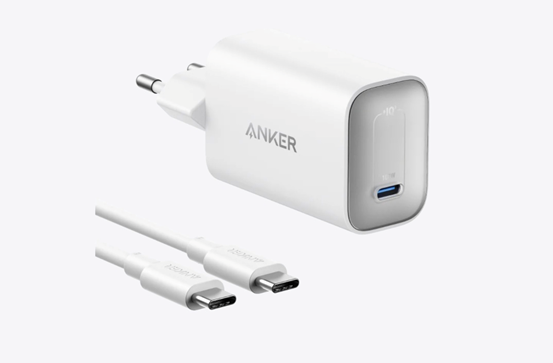That $5 charger might seem like a bargain, but it could cost you much more in the long run. While Apple's official chargers come with premium price tags, they're engineered to deliver precisely regulated power that keeps your iPhone safe. Cheap knockoffs often cut corners on safety features, putting your device at risk of electrical damage, battery degradation, or even fire hazards. Many users don't realize how much damage a poor-quality charger can cause until their iPhone starts malfunctioning or needing frequent battery replacements. In this article, we'll examine how counterfeit chargers harm your device, how to spot dangerous ones, and when it's actually safe to use third-party options.

1. How Cheap Chargers Harm Your iPhone
Inconsistent Voltage Spikes (Frying Circuits)
Quality chargers maintain steady voltage output, but cheap ones often deliver erratic power that fluctuates outside safe limits. Your iPhone's power management system can handle minor variations, but repeated voltage spikes (especially above 5V) can overwhelm these protections. Over time, this stresses delicate charging circuits and may lead to permanent damage - sometimes manifesting as random shutdowns, charging failures, or the dreaded "Accessory Not Supported" warning. Unlike physical damage that's immediately obvious, this electrical wear happens gradually, making it harder to connect back to the charger that caused it.
Overheating From Poor Heat Dissipation
Genuine apple chargers use high-grade materials and proper spacing between components to dissipate heat safely. Counterfeit chargers often pack components too closely together or use substandard materials that trap heat. During extended charging sessions, this can cause internal temperatures to rise dangerously high - both in the charger and your iPhone. Excessive heat accelerates lithium-ion battery degradation, potentially reducing its lifespan by hundreds of charge cycles. If your charger or phone gets uncomfortably hot during normal use, that's a clear warning sign you should stop using it immediately.

Lack of Surge Protection During Power Fluctuations
When your home's power fluctuates (during storms or when large appliances cycle on/off), quality chargers include surge protection to absorb these spikes. Cheap chargers often omit this crucial safety feature, passing electrical disturbances straight to your iPhone. While rare, severe power surges can instantly fry charging circuits or even damage the logic board - repairs that often cost more than buying several genuine Apple chargers. Even minor surges accumulate over time, gradually weakening your iPhone's ability to regulate charging properly.
2. Warning Signs of a Dangerous Charger
Several red flags indicate you might be using a hazardous charger. If your iPhone displays "This accessory may not be supported" with a generic charger (not just occasionally but consistently), that's Apple's way of warning you about potentially unsafe power delivery. Physical signs matter too - chargers that emit high-pitched whining noises, produce a burning smell, or have cracked/melted casings should be discarded immediately. Another telltale sign is inconsistent charging speeds; if your iPhone charges rapidly sometimes but barely gains percentage other times with the same charger, it likely has poor voltage regulation.
3. Long-Term Battery Damage
The most insidious effect of bad chargers isn't immediate failure but progressive battery damage. Poor-quality chargers often trickle-charge incorrectly, keeping your iPhone's battery at 100% voltage longer than necessary, which chemically stresses lithium-ion cells. Within months, you might notice your battery health percentage dropping faster than normal (check in Settings > Battery > Battery Health). Some users report their iPhone batteries degrading to 80% capacity in under a year with daily cheap charger use, versus 2+ years with proper chargers.
4. How to Identify Safe Third-Party Chargers
MFi Certification (For Lightning Cables)
Apple's Made-for-iPhone (MFi) program certifies third-party accessories meet strict performance standards. For Lightning cables, look for "MFi Certified" on packaging - this ensures proper power negotiation chips that prevent overcharging/overheating. MFi products undergo Apple's testing and use authorized components, though they're typically 20-40% cheaper than Apple's versions. Beware of fake "MFi" labels; verify certification by checking the manufacturer's listing on Apple's MFi database if uncertain.
USB-IF Certification (For USB-C Chargers)
For USB-C chargers, USB Implementers Forum (USB-IF) certification indicates compliance with universal power delivery standards. These chargers undergo rigorous testing for voltage accuracy, thermal performance, and safety protocols. The "USB Certified" logo should appear on packaging or product listings, and you can cross-check certified products on USB-IF's website. Certified chargers work safely with iPhones and other devices while maintaining optimal charging speeds.
5. When Cheap Chargers Might Be Safe
Emergency/Temporary Use Scenarios
In urgent situations where no better option exists, even a basic gas station charger can provide temporary power safely if used cautiously. Limit use to short charging sessions (under an hour), monitor heat buildup, and unplug immediately if the device or charger becomes uncomfortably warm. Avoid using the phone intensively (like gaming or video calls) while charging this way, as combined heat from processor and charger increases risks. Consider these situations like drinking questionable water while stranded - acceptable for survival but not daily practice.
Low-Power Charging (5W) Risks
Basic 5W USB-A chargers (like older iPhone power adapters) pose less risk than faulty fast chargers because they deliver lower energy levels. While slow, these simple circuits are harder to mess up dangerously in manufacturing. If you must use an uncertified charger, this lower-power option reduces (but doesn't eliminate) potential harm.
6. Best Practices for Charger Use
Regularly Inspect Charger/Cable Condition
Make a monthly habit of examining your charging gear. Frayed cables, loose connectors, or discolored charger ports indicate wear that could lead to shorts or sparks. Gently clean charging ports with a dry toothbrush to remove lint that causes poor connections. If any part feels abnormally hot during use or shows melted/discolored plastic, retire it immediately. Proper maintenance helps identify problems before they damage your iPhone.
Monitor Battery Health in Settings
Your iPhone tracks battery wear in Settings > Battery > Battery Health. If Maximum Capacity drops below 80% within a year of normal use, your charger might be accelerating degradation. Also watch for "Peak Performance Capability" messages indicating battery issues. These warnings help catch charger-related problems early before they require expensive repairs. Consider logging battery health monthly to spot abnormal decline patterns.
Conclusion
While the upfront cost difference between a $5 charger and a quality $25 option seems significant, the long-term math favors investing in safe charging gear. A degraded battery not only requires expensive replacement but also diminishes your iPhone's resale value and daily usability. For those seeking reliable alternatives to Apple's chargers, Anker's Apple chargers offer excellent balance of safety, performance and value according to extensive user reviews. Remember: Your iPhone represents a $800+ investment - protecting it with proper charging equipment isn't an expense, but insurance against much costlier problems down the road.